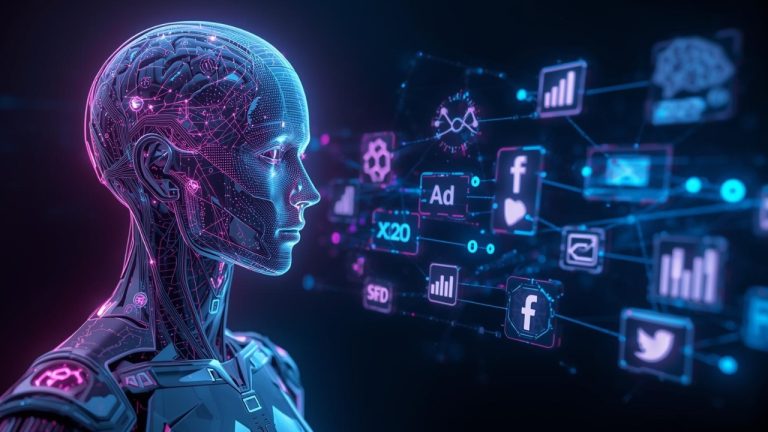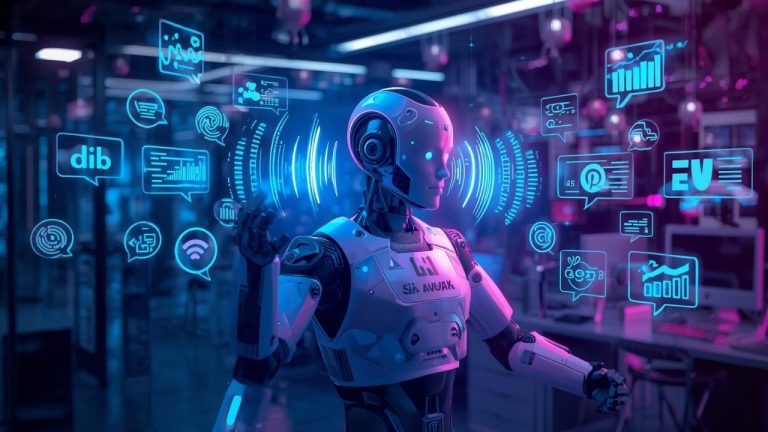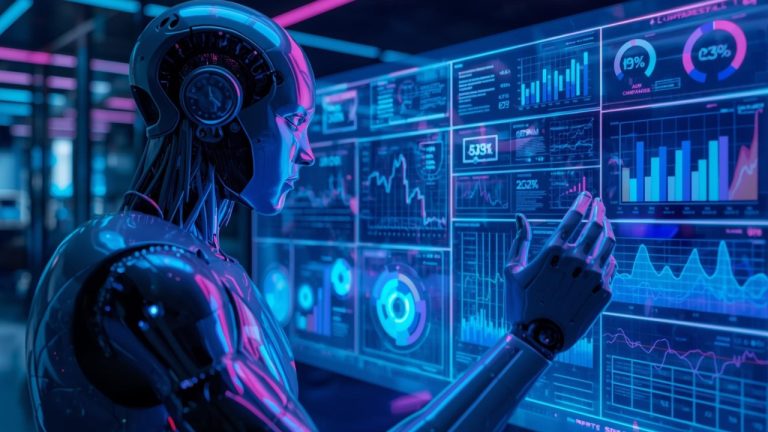
In the digital marketing world, a well-designed marketing funnel is crucial for turning prospects into loyal customers. Traditional funnels rely heavily on manual data analysis, guesswork, and repetitive tasks. But with the power of Artificial Intelligence (AI), businesses can create dynamic, automated, and data-driven marketing funnels that adapt to user behavior, optimize engagement, and increase conversions.
This guide provides a step-by-step roadmap for building an AI-powered marketing funnel, highlighting key strategies, tools, and best practices to help businesses of all sizes maximize ROI.
- Understanding AI Marketing Funnels
An AI marketing funnel is a structured journey that guides potential customers from initial awareness to final conversion, using AI to enhance personalization, automation, and insights at every stage.
Traditional funnels follow linear steps like awareness, consideration, and decision. AI enhances this model by:
- Predicting which leads are most likely to convert
- Automating personalized communication across channels
- Optimizing campaign elements in real time based on user behavior
The result is a smarter, more efficient funnel that adapts to each prospect.
- Step 1: Define Your Funnel Goals
Before implementing AI, you need clear objectives. Ask yourself:
- What is the ultimate conversion you want to achieve (e.g., purchase, subscription, lead capture)?
- Which metrics define success at each stage (e.g., clicks, email opens, demo requests)?
- Which channels will you use (email, social media, landing pages, ads)?
Having well-defined goals ensures AI tools are aligned with your business priorities and marketing KPIs.
- Step 2: Map Your Customer Journey
Understanding your audience is key. AI works best when it has accurate, structured data. Start by mapping your ideal customer journey:
- Awareness: How do potential customers discover your brand?
- Interest: Which content or campaigns capture attention?
- Consideration: How do prospects evaluate your product or service?
- Decision: What triggers the final purchase or conversion?
- Retention: How do you encourage repeat business or loyalty?
Mapping the journey allows AI to predict touchpoints, suggest content, and personalize interactions.
- Step 3: Collect and Organize Data
AI-powered funnels require high-quality data:
- Customer Behavior Data: Website visits, clicks, time spent, and navigation paths
- Demographics: Age, location, occupation, interests
- Engagement Data: Email opens, social media interactions, ad engagement
- Transaction Data: Purchase history, cart abandonment, repeat purchases
Centralize this data in a CRM or data management platform. Accurate, structured data ensures AI can make precise predictions and optimize every funnel stage.
- Step 4: Choose AI Tools for Each Funnel Stage
Different AI tools serve different purposes within the funnel:
- Awareness Stage
- AI Social Media Tools: Platforms like Buffer or Lately.ai analyze trending topics and optimize post timing.
- Programmatic Ad Platforms: AI automatically targets audiences likely to engage with your brand.
- Interest Stage
- Content Recommendation Engines: AI suggests blog posts, videos, or resources based on user behavior.
- Email Automation: Tools like Mailchimp or HubSpot personalize emails according to engagement.
- Consideration Stage
- Predictive Lead Scoring: AI identifies leads most likely to convert based on behavior and demographics.
- Dynamic Landing Pages: AI adapts page content in real time for individual visitors.
- Decision Stage
- AI Chatbots: Tools like Tidio or Chatfuel answer queries instantly and guide prospects to purchase.
- Pricing or Offer Optimization: AI predicts which discounts or packages maximize conversion.
- Retention Stage
- AI Loyalty Programs: Tools track engagement and predict customer churn, offering personalized rewards or reminders.
- Predictive Analytics: AI identifies upsell or cross-sell opportunities based on purchase patterns.
Selecting the right tools ensures that each stage of the funnel is data-driven, personalized, and optimized for conversion.
- Step 5: Automate Communication and Personalization
AI excels at personalization at scale. Key strategies include:
- Segmenting Leads: Automatically categorize leads based on demographics, behavior, and engagement.
- Dynamic Content: Show different website content, emails, or ad creatives based on user preferences.
- Behavior-Triggered Campaigns: Automate responses based on actions like abandoned carts, repeated site visits, or content downloads.
Automation allows your marketing funnel to respond in real time, delivering relevant messaging without manual intervention.
- Step 6: Implement Predictive Analytics
Predictive analytics uses AI to forecast outcomes and optimize decision-making:
- Lead Conversion Probability: Predict which leads are most likely to buy.
- Churn Prediction: Identify customers at risk of leaving and target them with retention campaigns.
- Content Performance: Determine which types of content drive engagement and conversions.
Integrating predictive analytics into your funnel ensures that resources are allocated efficiently and campaigns are continuously refined.
- Step 7: Monitor, Test, and Optimize
AI can automatically suggest optimizations, but ongoing human oversight is essential:
- A/B Testing: Compare different messages, landing pages, or offers to determine what works best.
- Funnel Analytics: Track metrics at every stage, including click-through rates, conversions, and drop-off points.
- Continuous Learning: AI algorithms improve as more data flows through the system, increasing accuracy over time.
Regular monitoring ensures that your funnel remains effective and adaptive to changing customer behavior.
- Step 8: Integrate Across Channels
A successful AI marketing funnel works seamlessly across multiple channels:
- Email, social media, and website: Synchronize campaigns so that messaging is consistent.
- CRM and ad platforms: Ensure AI insights inform ad targeting and lead nurturing.
- Chatbots and support systems: Use AI to provide a unified customer experience across touchpoints.
Integrated AI funnels create a cohesive, personalized journey that guides prospects smoothly from awareness to retention.
- Step 9: Maintain Data Privacy and Compliance
AI funnels rely on customer data, making privacy and compliance crucial:
- Obtain consent for data collection and marketing communications
- Follow regulations like GDPR, CCPA, or regional privacy laws
- Ensure AI tools store and process data securely
Respecting privacy builds trust with your audience, which is essential for long-term funnel success.
- Step 10: Scale and Evolve
Once your AI marketing funnel is performing effectively, consider scaling:
- Expand Channels: Integrate AI across new platforms such as mobile apps, SMS, or voice assistants.
- Advanced Personalization: Use machine learning to further refine messaging and offers.
- Multilingual Campaigns: AI translation tools can help you reach broader audiences globally.
- Continuous Optimization: Periodically revisit data, tools, and strategies to adapt to changing trends and customer behaviors.
Scaling ensures that your AI funnel grows with your business while maintaining efficiency and performance.
- Conclusion
Building an AI-powered marketing funnel transforms traditional marketing into a data-driven, automated, and highly personalized system. By following these steps—defining goals, mapping the customer journey, collecting and organizing data, selecting AI tools, automating communication, leveraging predictive analytics, monitoring performance, integrating channels, ensuring compliance, and scaling—you can create a funnel that guides prospects seamlessly from awareness to retention.
AI allows marketers to make smarter decisions, optimize campaigns in real time, and provide experiences tailored to individual users, all while reducing manual effort. Small businesses and large enterprises alike can benefit from AI marketing funnels that combine intelligence, automation, and personalization, creating more meaningful connections with customers and improving ROI.
The key to success lies in starting strategically, monitoring continuously, and evolving the funnel as new data and insights emerge. An AI-powered marketing funnel is not just a tool—it’s a framework for sustainable, efficient, and growth-oriented marketing in the digital era.
By embracing AI in your funnel strategy today, your business can stay ahead of the competition, deliver exceptional customer experiences, and drive consistent, measurable results.




